Fenestration Solutions for Efficiency and Performance
In fact, today's building projects get a boost from window and door products like the aerogel skylights that have emerged on the scene very recently. Just as many others, however, rely on ideas that have been around for many decades. An example is the tilt-and-turn window, a hallmark of European modern architecture and a growing specification for various building types in the United States. Tilt-turns offer three separate functions in one window: a traditional casement look in the turn position, convenient top ventilation in the tilt position, and ideally a well-sealed, efficient picture window when closed. The newest versions, however, feature bulked-up profiles and thicker glazing.
New or old, these advances share a few important traits: First, they help architects meet and exceed today's challenging energy rules, including the International Energy Conservation Code (IECC) and jurisdictional “reach codes” in states from California to Massachusetts. Second, they enhance daylighting and views without unwanted interior temperature swings. Third, they add a range of performance features from improved interior acoustics and physical security to improved enclosure interfaces and enhanced durability.
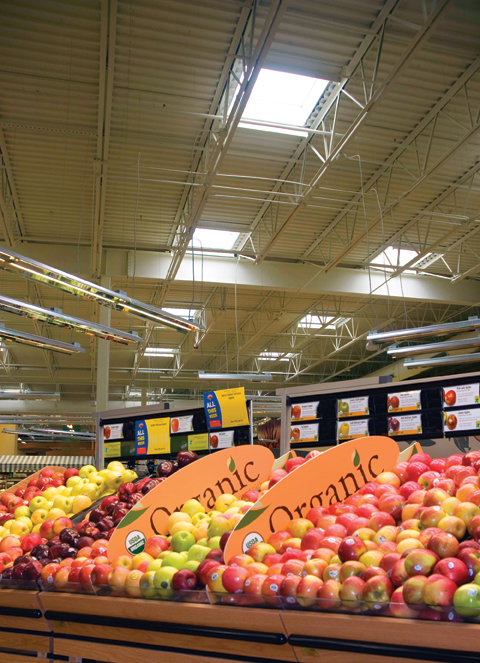
Photo courtesy of Wasco Skylights
Aerogel-filled skylights bring the sun into the nation’s first LEED Platinum grocery store while keeping R-values high. Architect Next Phase Studios designed the grocery, located in Augusta, Maine.
“The tilt-and-turn systems stand to gain ground in today's environment of stricter energy codes, where building occupants expect comfortable interiors without the unchecked temperature swings caused by poor fenestration,” says Alan B. Wall, director of sales and marketing with Menck Windows, which recently dedicated a new manufacturing facility on the East Coast. “The German-style tilt-turn systems have robust, thick sashes and frames, which work well with high-performance gas-filled lights and even triple glazing.”
In addition to high-performance envelope projects in both the residential and commercial segments, Wall points to a few recent multifamily and institutional projects that have used these advantages to meet such voluntary standards as net-zero energy and Passive House (phius.org), which may specify quantifiable levels of both energy efficiency and occupant comfort.
With these gains in fenestration technology and performance are ideally placed to match the higher expectations of both building users and standard-setting bodies, it would seem sensible to invest time and design talent on their use. Yet even to employ today's best normative design strategies, many architects have to battle the client group's often steadfast focus on first cost, speed to market, and initial financial gain.
Architects are polishing up their skills to design better enclosures and to better convey the benefits to their clients and project teams, says Peter St. Thomas, a sales executive with 25 years of plant management and international technical expertise at REHAU North America. “There has been quite a movement on the value front in the building industry, so architects are grappling with how to find the windows that have the proper U-value,” he says.
Energy Codes Guide Fenestration
“Some architects struggle to understand how fenestration performance numbers work in terms of design,” adds REHAU’s St. Thomas. “Many don’t know how to specify new, performance-grade windows for the kind of building on the boards. Too often, they fall back on copy-and-paste specs, which may not serve their designs adequately.” He and other fenestration technical experts recommend developing a “blended specification” that identifies key performance criteria for structural performance and energy transfer, ideally with a target maximum U-value. He also sees leading architects calling out the sound-transmission class, or STC, often to help make their buildings healthier for occupants.
Projects such as schools and hospitals may have significant issues in terms of energy performance and sound transmission, says Ralph Walker, RA, LEED AP, CSI CDT, an associate with architecture and interiors firm SmithMaran. “We work with the manufacturer to develop a customized specification on acoustics, which is based on an OITC rating, or outside-inside transmission class, the most applicable designation for how much noise comes into a space through an assembly,” he says. Other key elements of the specification include thermal performance, shading coefficient requirements, and heat gain through the glass, Walker adds, as well as one final consideration: security.
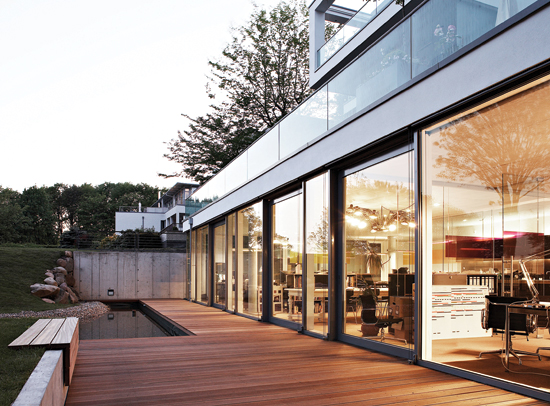
Photo courtesy of Menck Windows
Elbchaussee, Germany
Yet project designers like Walker often start the project focusing on energy performance first, because even small modifications to the glass or frame design can have an outsize impact on energy use over many years of building operations.
The key is to begin with products that help the overall assemblies meet or exceed the IECC, to ensure that energy performance is in line with regulatory and client expectations. This task has been eased for residences, as the energy conservation rules for IECC and the International Residential Code (IRC) are now aligned, as of their 2012 editions. On the commercial side, there's no more distinction between nonmetal- and metal-framed fenestration in the prescriptive provisions. But for many designers of large-scale open spaces for the public, there are recent mandates for daylighting coupled with automated shading and dimming control systems.
Starting with the basics, the 2012 IECC offers three ways to comply with the codes for residential projects and two paths for commercial construction. The prescriptive paths lay out minimum energy criteria for each product or system used for the building enclosure. For residential windows and doors, these prescriptive paths have no limitations on how much vertical glazing or how many skylights can be used on a house or apartment. However the prescriptive options are quite miserly on the commercial side: They may only be used if the total areas for glazing, windows, and skylights do not exceed the given limits. For the 2012 IECC, which is being adopted in many jurisdictions, automatic daylighting (dimming) controls are assumed for some of the more generous limits.
For example, according to Julie Ruth, P.E., a code consultant for the American Architectural Manufacturers Association (AAMA),1 a building design can always have fenestration for up to 30 percent of its wall area. But this is relaxed to 40 percent of the above-grade wall area if daylighting controls are employed and the following two conditions are also met: At least half of the conditioned floor area receives daylighting and the glazing is specified with a ratio of visible transmittance (VT) to solar heat-gain coefficient (SHGC) that is higher than 1.1, Ruth explains. Like the three legs of a stool, however, for the higher WWR allowance to stand, all of these three design requirements must be met. A similar rule applies for skylights, allowing up to 5 percent of the roof area, an improvement on the 3 percent otherwise offered.
Changes like this one bring the IECC's prescriptive paths up to speed with leading architects and green building specialists who have advocated for the use of integrated dimming and daylighting for many years. “Why shouldn't we take advantage of the cost- and carbon-neutral resources available to us like sunlight, particularly if it can improve our health and well-being?” asks Breeze Glazer, LEED AP BD+C, a senior associate, sustainable design leader, and research knowledge manager with Perkins+Will. “One of the most effective means is to reduce daytime lighting loads by combining dimmable lighting systems with properly orientated fenestration that provides for sensible, effective natural daylighting.”
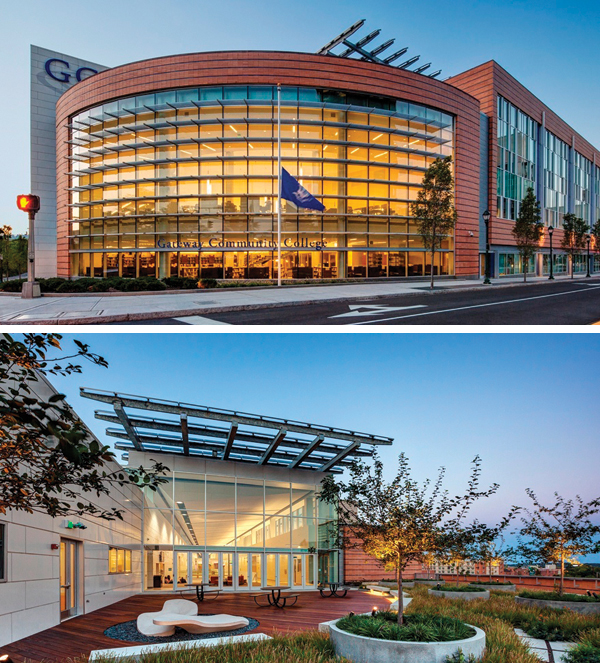
Photos by Woodruff/Brown, courtesy of Perkins+Will
Recognized in the new IECC, integrated daylighting and dimming improves the efficiency of high-visibility façades as on the 367,000-square-foot, LEED Gold campus center for Gateway Community College in New Haven, Connecticut, designed by Perkins+Will.
Another rule introduced in the 2012 IECC is a minimum requirement for skylight area that calls for toplighting 50 percent or more of any floor areas larger than 10,000 square feet in area, directly below the roof and with floor-to-ceiling heights of 15 feet plus. A long list of uses for the spaces makes them applicable to this minimum skylighting requirement, including convention centers and office spaces, manufacturing and warehouse facilities, retail and transportation areas, as well as any lobbies, atriums, corridors, concourses, or even storage areas.
Notice

www.dowcorning.com/construction
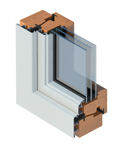
www.menckwindows.com
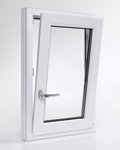
www.na.rehau.com/4500
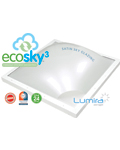
www.wascoskylights.com/ecosky3









